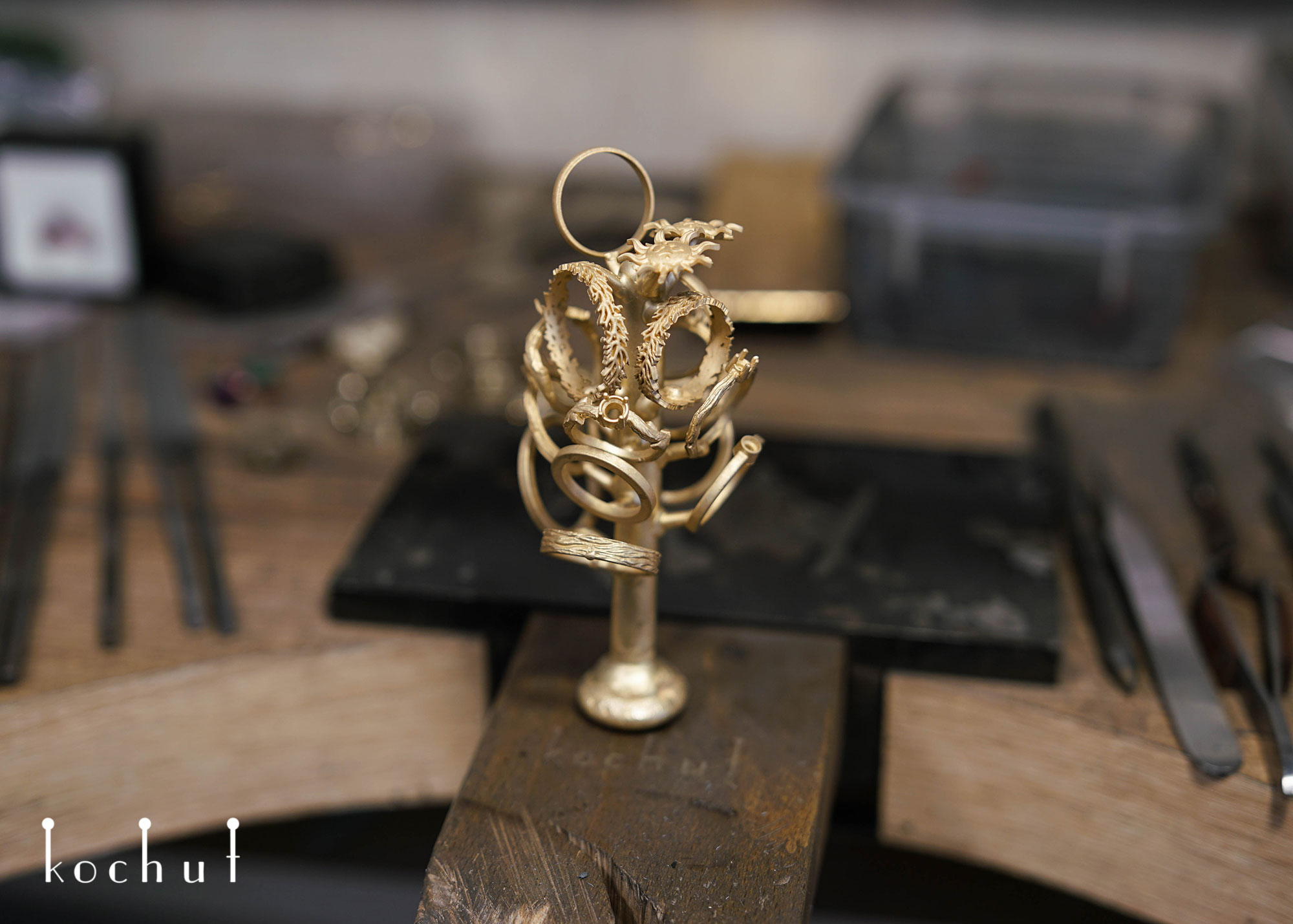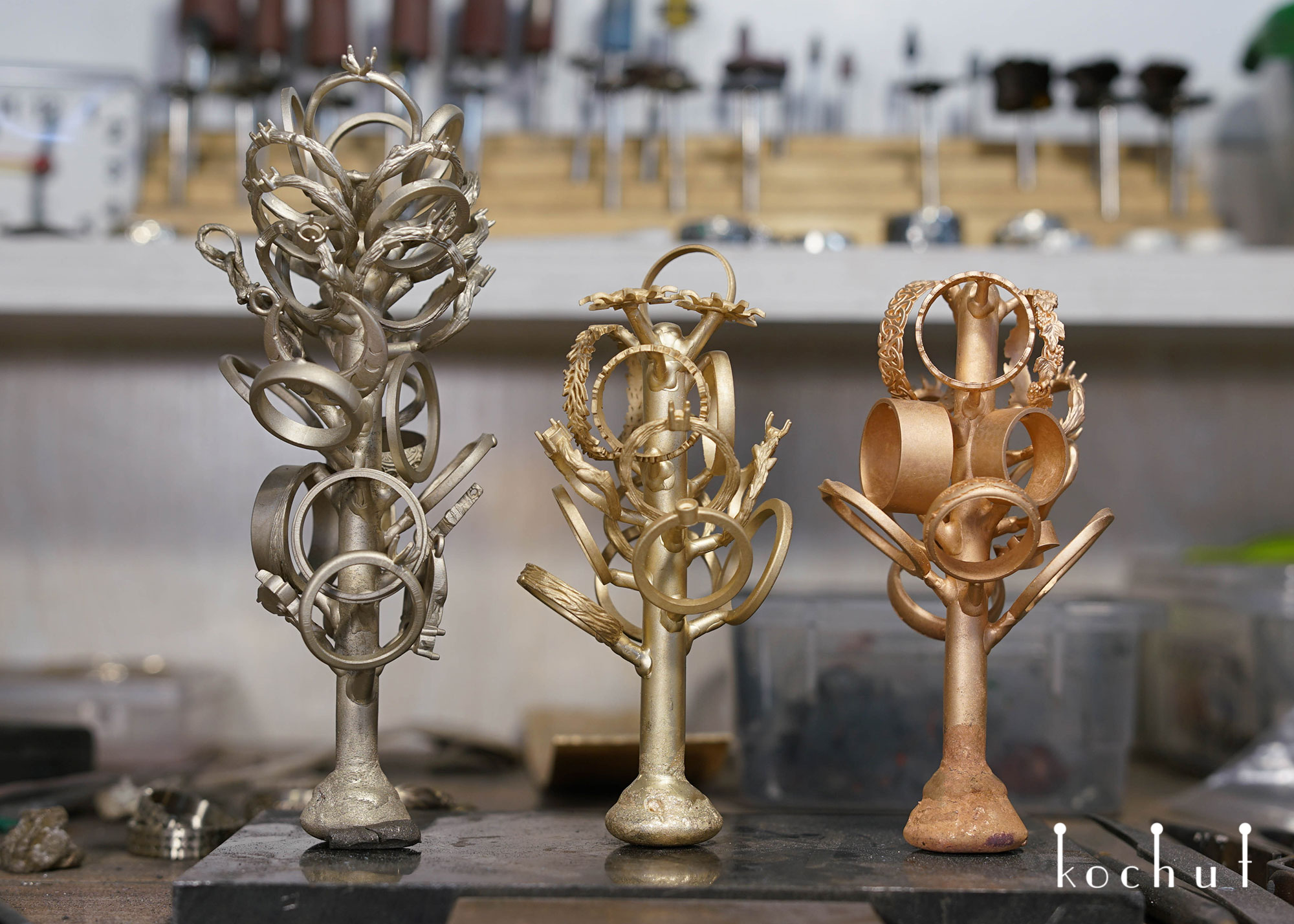Gold fineness in jewelry art
 29698
29698 In this article, you will learn about the most common questions regarding gold fineness. But before you dive into reading, we recommend that you familiarize yourself with 2 basic concepts to better understand the article:
Fineness — represents the weight of fine metal therein, in proportion to the total weight which includes alloying base metals and any impurities.
Ligature — auxiliary elements (impurities) that are added to the composition of precious metal to improve certain of its properties.
Gold purity?
24K — is pure gold, which chemists like to call Aurum (chemical element Au). In addition to the high price and its softness, jewelry made from "Three nines" — not practical to wear. A slight amount of force is enough to bend the metal and cause scratches. Of course, it will be possible to make a simple ring from it, but its look may not remain until the end of the day.
For this reason, 24K are presented in most cases in gold bars, which are used for investment purposes, or in plates for outputting low samples of gold.

23K — an alloy (aurum content of 95.8%), which refers to soft gold and is mainly used in Eastern countries. Jewelry is made of it, but in very massive sizes so that they are not much subjected to deformation.
18K — consists of 75% gold, allows you to realize the most fastidious ideas of a jeweler. But it is not as hard as the 14K. Therefore, exclusive and premium jewelry that requires careful wearing is mainly made from it.

14K — the golden mean, a harmonious combination of gold (58.5%) and impurities (argentum, copper and zinc). At the moment, this is the most popular and practical fineness, which allows you to get various shades of metal.

9K — low-grade gold, marked by excellent strength, however, it quickly becomes cloudy and oxidized due to the high content of impurities. It is mainly used in mass production.
What karats to choose for jewelry? 14K or 18K?
First of all, you need to consider the budget, since jewelry made of 18K will be more expensive. Next, ask yourself a question, “Why I need this jewelry and how it should look like?” If you want jewelry for daily wear, we recommend 14K, since the jewelry keeps its best look much longer. And products in 18K should be considered more for solemn events at which you can show yourself in all its glory.
How to distinguish 14K from 18K?
If you often work with gold, it is possible to distinguish by eye, but an ordinary person will not see the difference. We did a short tour of the vastness of Google and saw that some sources offer home-made methods for checking the fineness using iodine, vinegar, and other substances. We recommend that you never use such methods, since you risk damaging the jewelry.
“Jewelry is not a testing ground”
The best and most reliable method will be to contact special laboratories that will quickly and safely conduct an examination for you.
Allergic reactions to gold?
Unfortunately, there are a considerable number of people who are not able to wear gold jewelry due to allergies. True, in most cases, this is not an allergy to gold itself (aurum), but to impurities contained in the alloy (copper, nickel, silver). In its purest form, gold itself is considered hypoallergenic.
Perhaps one of you will want to say: “Stop, if gold does not cause allergies, does this mean that the body will not react so intensely to a higher fineness?” In general, this opinion exists, since 18K gold contains significantly less ligature. An allergic reaction will still occur, but not so fast.
If you want to completely protect yourself from allergies, but want to wear gold jewelry, we recommend that you think about coating white rhodium (link). After covering the jewelry with rhodium, a formed microfilm on it will not allow admixtures to contact human skin. True, this coverage needs to be updated from time to time, since it does not last forever.
The colors of gold.
The color of the jewelry depends on the proportions of the ligature. For example: if you combine gold and only silver, the alloy will have a green tint; if gold and copper — a rich red tint.
In addition to color changes, the mechanical characteristics will also change. White gold is much harder than red or yellow, nor does it work so well. Yellow gold is a harmonious combination of hardness and ductility.

Leave a comment via Facebook:
Kochut and our partners use cookies on this website. Some of them are required for the site to function properly, but the following cookies are optional:
— cookies that analyse website usage;
— cookies used to personalize the site;
— cookies used for advertising and social media purposes;




